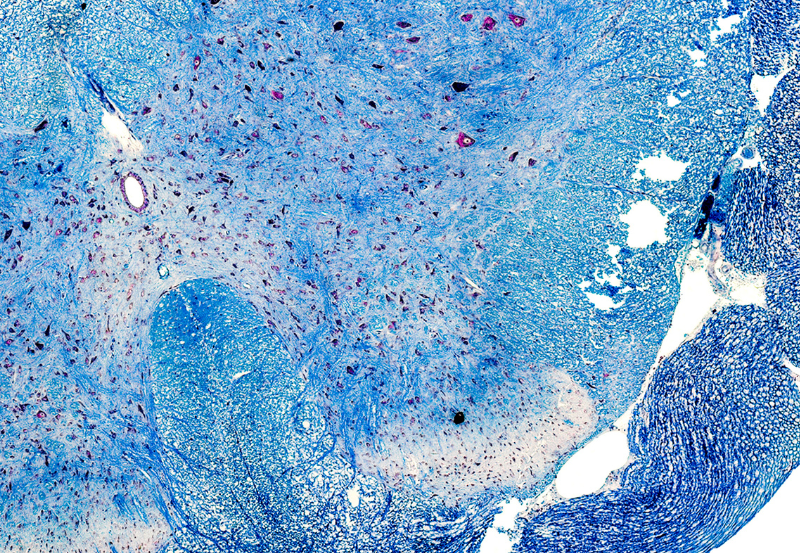Many studies show that the concentration of HMGB1 after spinal cord injury increases rapidly, lasts for a long time, and also promotes the recovery of the injured spinal cord.
Spinal cord injury (SCI) is characterized by sensory, motor and autonomic nerve dysfunction; in literature has been demonstrates that HMGB1 induces cell migration by activating RAGE or CXCR4 receptor through a heterologous complex with CXCL12.
SDF1 – Stromal Cell-Derived Factor 1α (CXCL12) is a chemokine that binds to the chemokine receptor CXCR4 and plays an essential role in homeostatic regulation of leukocyte traffic, hematopoiesis, organogenesis, cell differentiation and tissue regeneration.
The HMGB1-CXCL12 complex between can induce monocyte migration more efficently than CXCL12 alone. HMGB1-CXCL12 complex induces cytokines and chemokines production promoting inflammation.
HMGB1 when binds in heterologous complex with CXCL12 can inhibit nerve inflammation and protects the spinal cord; it can also induces neuronal differentiation promoting spinal cord injury recovery.
HMGBiotech can provide comprehensive information to facilitate informed decision-making for research involving HMGB1 and SDF1 (CXCL12).
Discover our SDF1 (CXCL12) proteins
Read the full article about the study: https://www.frontiersin.org/articles/10.3389/fimmu.2022.1094925/full

